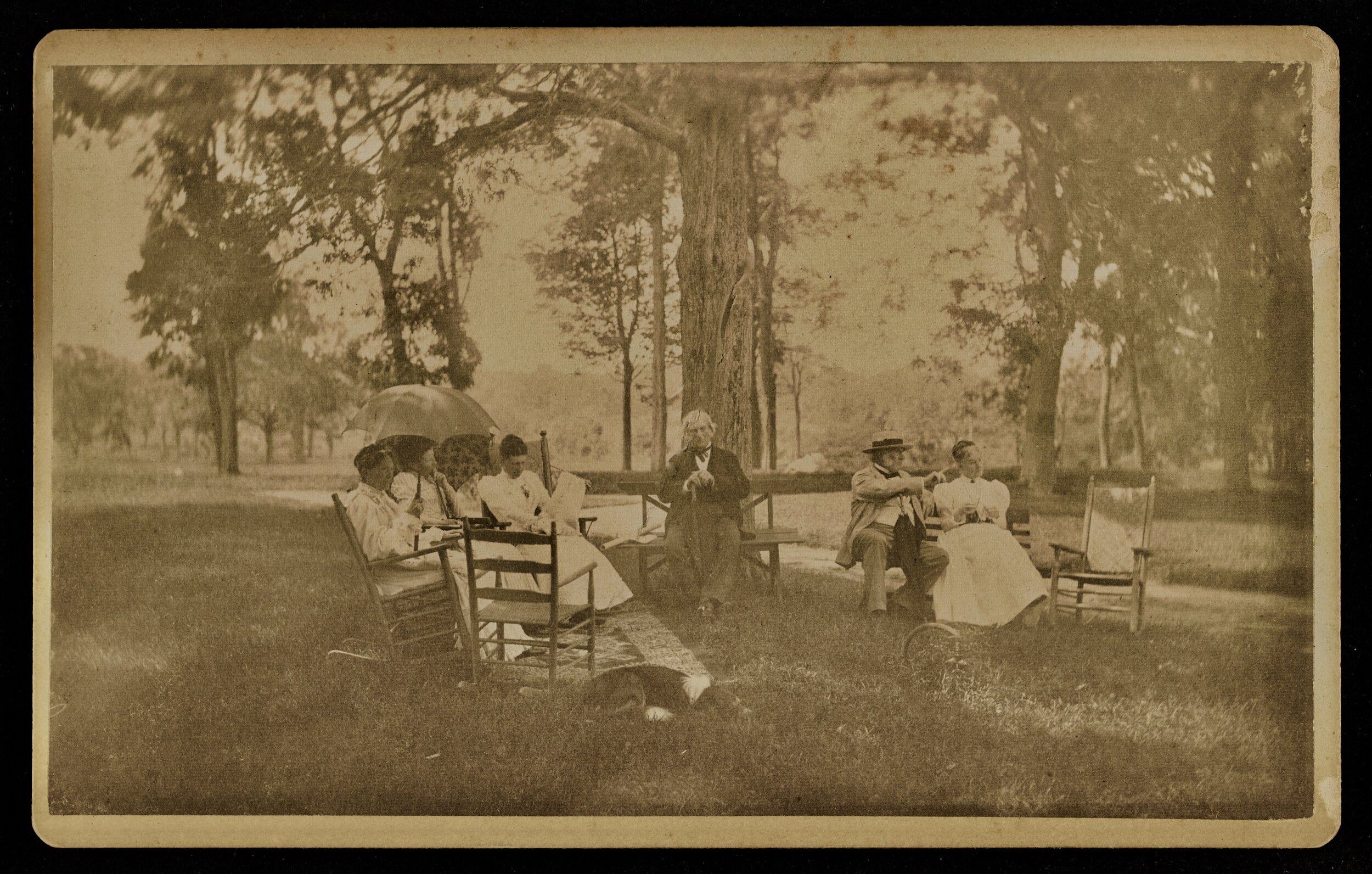OUR HISTORY
On the ancestral lands of the Manhansett People, Shelter Island's Sylvester Manor was established in 1651 as a provisioning plantation for the Barbadian sugar trade. Originally owned by an Anglo Dutch sugar consortium and worked by enslaved Africans, indentured or paid Native American and European laborers, Sylvester Manor is now a 501(c)3 nonprofit organization. An historic site of conscience, our mission is to Preserve, Cultivate and Share Sylvester Manor, with the goal of ensuring that the voices and histories of the Indigenous, Enslaved and Free People of Color are honored, elevated and incorporated more completely into the greater historical narrative of the region and the United States.
We bear a responsibility to share the history of indigenous displacement, generational enslavement, and indenture with our community, visitors, students, artists and scholars. As the most intact slaveholding plantation north of Virginia, held for 363 years by one family of European descent, Sylvester Manor is uniquely positioned to support this work with its landscape of 236 acres, 1737 Manor House, working farm and extensive onsite and offsite collections including archaeological artifacts, decorative arts objects, ephemera and documents deriving from the occupancy of eleven generations of the descendants of Nathaniel Sylvester, and from the native people who resided here for thousands of years.
Since early 2022, with funding from the Mellon Foundation, we have been able to devote staff and resources to research our history with greater depth and concentration than ever before. The results have been meaningful and exciting as we uncovered the identities and lives of Enslaved and Free People of Color that we had no knowledge of before tracing family lineages from slavery to freedom at Sylvester Manor, Shelter Island and the greater East End of Long Island. We have, to date, successfully confirmed the identities of over fifty people we know were laid to rest in unmarked graves in the Afro-Indigenous Burial Ground at Sylvester Manor.
Archaeology at Sylvester Manor
Beginning in 2021, Sylvester Manor began a three-year partnership project at the Burial Ground with members of the Shinnecock Tribal Nation Graves Protection Warrior Society, Honor Our Indigenous Ancestors, Inc., Unkechaug Nation and representative descendents of tribal people of Long Island. Together with a team from the University of Massachusetts Fiske Center for Archaeological Research, the project focuses on the archaeological study of this Burial Ground under the direction of Dr. Stephen Mrozowski of the University of Massachusetts Boston. Dr. Mrozowski has led archaeological studies at Sylvester Manor for over 20 years and observes,
“This project will usher in a new era of collaboration that seeks to right the wrongs of the past while charting a future shaped by indigenous voices. Archaeology owes nothing less to the indigenous peoples of Long Island – this is, after all, their land and their history.”
The study has been supported by grants from the National Trust for Historic Preservation’s Hart Family Fund for Small Towns and the 400 Years of African American History Commission.
As stated by Stephen Searl, Executive Director for Sylvester Manor, “This partnership will have a transformative impact not only on our ongoing archaeology work at Sylvester Manor but how we tell the history of this place, whose stories we tell, and how we use this 236-acre property in the future. This project has the potential to be a model for other archaeologists, historians and culturally significant sites around the nation. We are honored to be working with Native partners on such an innovative and groundbreaking project.”
Additional study of the area will resume in the Fall of 2023 as we continue our research into the identities and lives of those who are buried there.
Sylvester Family
Listing of Enslaved Bequeaths in Nathaniel Sylvester’s Last Will & Testament Learn more…
Listing of Children of Nathaniel & Grizzell Learn more…
Sylvester Family Tree Learn more…
Slavery at The Manor
Hannah, Jacquero, Hope & Isabell
The first African family of Shelter Island was brought to Sylvester Manor by Grizzell Brinley in 1652 as enslaved people. Learn more…
Tammero, Oyou and Obium
In the Last Will and Testament of Nathaniel Sylvester dated 1680, an enslaved family is listed – “Tammero (male) and Oyou (female); children, Obium (son), Tom, unnamed child, unnamed child.” Learn more…
The Daughters of Judah
We have uncovered the lives and history of a family of four generations of women who all lived and worked at Sylvester Manor at some point in their lives, tracing them from slavery to freedom to burial in the Afro-Indigenous Burial Ground on Manor property. Learn more…
Comus and Dido Fanning
Manumitted in 1796, Comus Fanning eventually saved enough money to purchase twenty-one and three-quarter acres of land near the Manor. He and his wife Dido, who was enslaved by Nicoll Havens on Shelter Island, lived on the land, along with Dido’s daughter, Julia Dyd Havens, who was born free ca. 1815. Learn more…
Julia Dyd Havens Johnson
Julia Dyd Havens Johnson was a free mixed-raced woman born on Shelter Island c. 1808. Her mother Dido, a free woman at the time of her birth, had formerly been enslaved in the household of Nicoll Havens, also of Shelter Island. Learn more…
Pharaoh Brothers
In November 1829, two young boys, Issac and William Pharaoh, were brought to Sylvester Manor by their mother, to be placed in indentured servitude. Learn more…
David Hempstead Sr.
David H. Hempstead Sr. died in November 1843. At the time of his death he was the owner of a 95 acre farm near West Neck on Shelter Island. Owning the farm was the culmination of a long life of work. Learn more…



